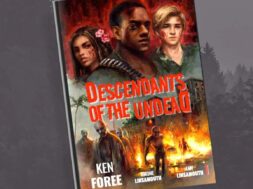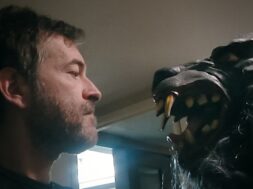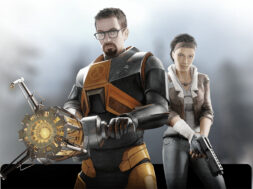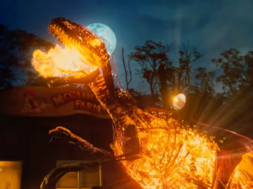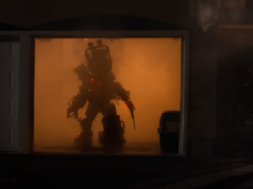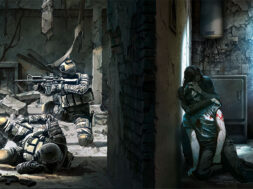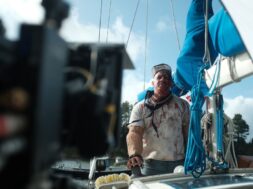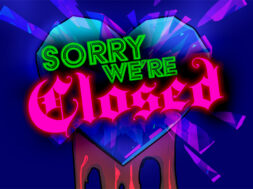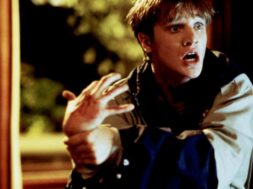Horror contemplates in great detail how young people handle inordinate situations and all of life’s unexpected challenges. While the genre forces characters of every age to face their fears, it is especially interested in how youths might fare in life-or-death scenarios. The column Young Blood is dedicated to horror stories for and about teenagers, as well as other young folks on the brink of terror.
I was raised on urban legends without my realizing it. From scanning our car’s backseat for serial killers, to him inspecting my Halloween candy for razor blades, my father perpetuated the lurid myths he grew up with. I eventually found the source of his odd methods and advice as a teenager; a niche of disturbing tales where hook-handed murderers terrorize couples, rats are deep-fried, and albino alligators dwell in sewers.
On top of books like Scary Stories to Tell in the Dark and The Vanishing Hitchhiker were the horror movies that played a significant role in my new hobby. And no movie was more influential than the aptly titled slasher, Urban Legend.
The 1998 movie starts off with college sophomore Michelle (Natasha Gregson Wagner) driving away from an altercation at a gas station; the attendant’s attempt to save her from an unseen threat was unsuccessful, to say the least. Back on the lonely road, Michelle is oblivious to her dangerous stowaway as she anxiously sings off tune to Bonnie Tyler’s foreshadowing power ballad, Total Eclipse of the Heart. Tyler’s melodious pleas of “turn around” are in vain. Finally, the sinister outline of this Death incarnate – brandishing an ax rather than a sickle, and ditching the hooded robe for a hooded parka – rises from the back of the SUV, only visible whenever lightning strikes in the night sky above. With one full swing of the ax and only a second of cognizance in the victim’s eyes as she looks into the rearview mirror, Urban Legend delivers a grislier version of the story that dawns on me each time I enter my car alone at night.
Pendleton University is soon ablaze with worries as Jared Leto’s Paul, a callous and opportunistic student reporter, sensationalizes Michelle’s death with the newspaper headline: “Lunatic on campus?” The film’s “final girl” Natalie (Alicia Witt) then becomes the centerpiece in this series of murders where every kill is modeled after an urban legend. One by one, her friends fall prey to the assailant in the parka, and Natalie is left to wonder if her troubled past has something to do with the killings.
Jamie Blanks’ debut is hardly the first horror movie to draw inspiration from urban legends. The 1983 portmanteau-film Nightmares yields a rather faithful adaptation of “The Killer in the Backseat”, whereas another anthology, 1997’s Campfire Tales, borrows from three other different legends. And of course the basic plots of When a Stranger Calls and Black Christmas are based on “The Babysitter and the Man Upstairs”. Yet unlike the aforesaid films, this movie is forthcoming about the influences and completely embraces these outlandish yarns for all they are.
The mystique of contemporary folklore is essentially gone thanks to logic and research, but their efficacy remains intact. Adding a moderate coat of self-awareness as well as updating the settings and circumstances all help to make these tall tales digestible and the audience more receptive. For instance, having Danielle Harris’ character, Tosh, be killed by a stranger online is not only a clever twist on the “the calls are coming from inside the house” gag, it is also a fantastic setup for one of the most gruesome executions in the movie. Not everyone was familiar with “Aren’t You Glad You Didn’t Turn on the Light” at the time, yet there is no forgetting the story now after seeing Tosh get slaughtered in her and Natalie’s dorm room with the latter asleep and none the wiser.
Urban legends, particularly those where women are imperiled, have a history of reflecting patriarchal ideas. Mothers who worked or did not stay home with their family all the time were punished; surrogates and other “mothers in training” were not spared either. A woman who acts on her sexuality is endangered by “The Hook” or other homicidal creeps lurking in the dark. Suspending a dead boyfriend’s body over the girlfriend and subjecting a babysitter to harassing phone calls from a male intruder upstairs both represent the oppression of women. At last, any sort of female independence — be it driving, going away to college, or living without the need of a man — is again met with violence.
Urban Legend is accused of being too imitative of Scream; there is no doubt Wes Craven and Kevin Williamson’s movie made its existence possible in the first place. However, late screenwriter Silvio Horta‘s subversion of the film’s entire motif is something that goes unnoticed. With the majority of the main cast now picked off, only two characters can be the killer — Natalie’s love interest Paul or her best friend Brenda (Rebecca Gayheart). The movie curiously goes with Brenda, who in turn provides a campy, uncurbed performance as big and wild as Gayheart’s hair. Having Brenda be the killer incidentally undermines the abovementioned, misogynistic urban legends where men are often the ones scaring and murdering women. The bias toward male culprits in slashers makes Brenda’s unmasking all the more effective.
Bringing urban legends into the nineties was no easy feat considering how much time had passed since they were unchecked and in full circulation. Cynicism was at a high as well. The website Snopes was in the midst of debunking old and new legends while American folklorist Jan Harold Brunvand determined their origins. Like the movie’s characters who are dismissive until trouble happens, though, a sliver of doubt sits in the back of the audience’s minds. They begin to think of their own lives as stories waiting to end on a macabre twist. The tagline on the poster sums it up best: “What You Don’t Believe Can Kill You.” Playing with that chance of maybe, just maybe, these fictions are not so far-fetched after all is a part of what makes the film so enjoyable for folklore enthusiasts like myself.
Although my education in horror began years earlier, I did not see a horror movie in theaters until this crop of neo-slashers emerged in the late nineties. The timing of Urban Legend was fortunate given my new hobby, and to make it even more special, I saw the movie with my father who I seldom shared interests or opinions. Being able to draw and keep his attention with any one of these weird, word-of-mouth stories from the books he gave me always brought a smile to both our faces. So while he may no longer be here to warn me of the dangers I might face in a growing and changing world, I always think of him as I spot a classic urban legend in the wild or feel the need to check my car’s backseat as I get in.
